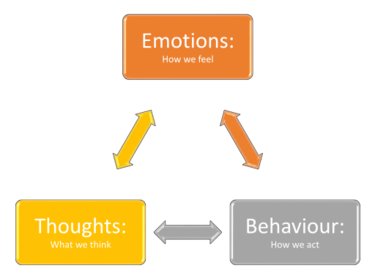

3 Steps Towards Conquering Your Phobias
 It is estimated that around 10% of people have specific phobias, while 7.1% have social phobias. Phobias can cause very severe anxiety, terror, depression, and physical symptoms such as nausea, shaking, and panic attacks. Some people also have agoraphobia; a fear of being alone in public spaces. Phobias and fears can adversely affect your ability to carry out everyday tasks or to take part in very specific activities like bungee jumping, climbing, swimming, or even going to the circus. However, there are ways to overcome your phobias.
It is estimated that around 10% of people have specific phobias, while 7.1% have social phobias. Phobias can cause very severe anxiety, terror, depression, and physical symptoms such as nausea, shaking, and panic attacks. Some people also have agoraphobia; a fear of being alone in public spaces. Phobias and fears can adversely affect your ability to carry out everyday tasks or to take part in very specific activities like bungee jumping, climbing, swimming, or even going to the circus. However, there are ways to overcome your phobias.Reduce The Risks
Phobias are known as irrational fears but some do pose a genuine risk of injury. For example, 7% of injury-related deaths are caused by drowning. However, taking formal swimming tuition reduces the risk of drowning in children aged 1 to 4. It also reduces the risk of drowning in adults, so learning to swim can help to reduce your fears and the risks of the water. It is estimated that 64% of people fear deep, open water, therefore it is not uncommon. Many people with milder social phobias or agoraphobia learn to reduce the perceived risks by going out in public or to events with another person, which can sometimes allow for distraction and reduce anxiety symptoms. However, in extreme cases, a person with agoraphobia may be afraid to leave the house. In these cases, further treatment and intervention may be needed.
Cognitive-Behavioral Therapy
 Cognitive-behavioral therapy teaches new skills and helps the patient react differently to the perceived threat. A 2003 study published in NeuroImage showed that cognitive-behavioral therapy 'rewired' the brain of those with a spider phobia, therefore the approach can help to improve anxiety disorders. Patients learn how their thought processes and thinking patterns contribute to the anxieties felt in certain situations or when faced with their fear. They are then encouraged to change these thinking patterns and replace them with new ones. This helps those with phobias to rationalize their thoughts and provide evidence as to why negative thoughts are causing anxieties and fears.
Cognitive-behavioral therapy teaches new skills and helps the patient react differently to the perceived threat. A 2003 study published in NeuroImage showed that cognitive-behavioral therapy 'rewired' the brain of those with a spider phobia, therefore the approach can help to improve anxiety disorders. Patients learn how their thought processes and thinking patterns contribute to the anxieties felt in certain situations or when faced with their fear. They are then encouraged to change these thinking patterns and replace them with new ones. This helps those with phobias to rationalize their thoughts and provide evidence as to why negative thoughts are causing anxieties and fears.Other Behavioral Therapies
Another technique involves diaphragmatic breathing. The patient is encouraged to take slow, deep breaths when faced with their fears to reduce anxiety symptoms. Some people even use technology to help change behaviors, such as using apps on their phone to control breathing. This may be helpful during a panic attack. For those who have trouble facing their fears entirely, such as those with severe agoraphobia, exposure therapy can be used. This is often used as part of a cognitive-behavioral approach and involves exposing the patient to their fear gradually to reduce anxiety. This is carried out in a safe environment to allow the patient to connect feelings of safety with the item or situation.
Before attempting to conquer your fears or phobias, you should consult with a physician to find the correct approach for you. If your phobia is severe it may require the application of various therapies depending on the reasons and background of your fears. Remember that things can improve with a little help.
Image Credits:
Image 2: Simon Brown, CC BY-SA 4.0, via Wikimedia Commons
Copyrights © 2025 Inspiration Unlimited - iU - Online Global Positivity Media
Any facts, figures or references stated here are made by the author & don't reflect the endorsement of iU at all times unless otherwise drafted by official staff at iU. A part [small/large] could be AI generated content at times and it's inevitable today. If you have a feedback particularly with regards to that, feel free to let us know. This article was first published here on 8th January 2021.
Overthinking? Uninspired? Brain Fogged?
Let's Reset That! Try iU's Positivity Chat NOW!

All chats are end-to-end encrypted by WhatsApp and won't be shared anywhere [won't be stored either].


